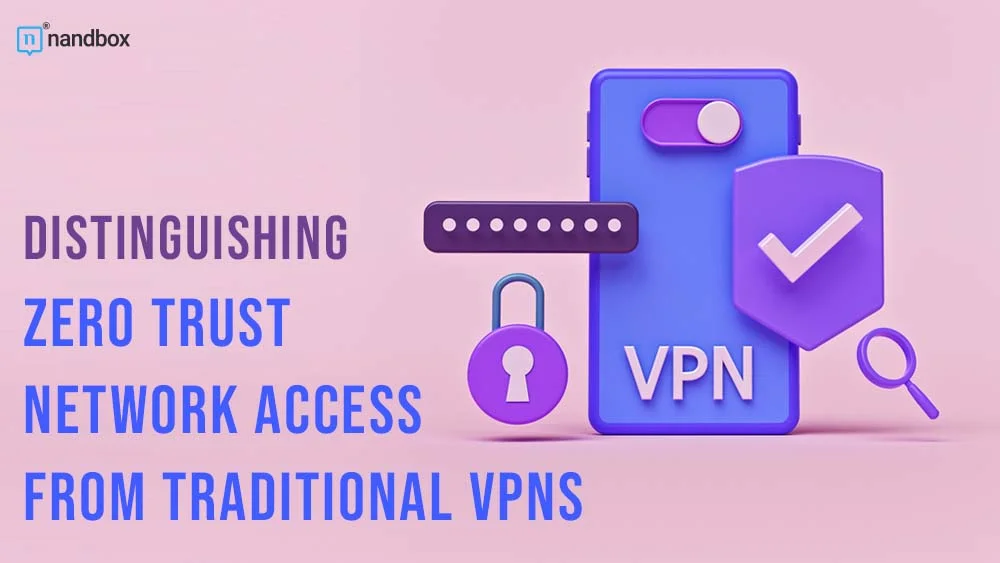Zero Trust Network Access vs. VPN: What’s the Difference?
In the realm of network security, the demand for robust remote access solutions is paramount, particularly as enterprises navigate cloud-based environments. Traditional perimeter-based security models face challenges due to remote work, cloud service proliferation, and escalating cyber threats. Amidst this landscape, two leading remote access solutions have emerged: secure VPNs and Zero Trust Network Access (ZTNA) via a SASE model. So zero trust network access vs VPN, what’s the difference?
While secure VPNs have long been the go-to for remote access, their reliance on perimeter-based security models has shown limitations as cybersecurity evolves. In contrast, Zero Trust, guided by the principle of “never trust, always verify,” offers a dynamic and secure approach. Zero Trust Network Access (ZTNA), rooted in this model, provides tailored solutions for modern cloud environments.
In this article, Aviatrix aims to compare zero-trust network access with traditional and secure VPNs, highlighting their respective advantages and considerations amidst today’s security challenges. It’s crucial to note that the best choice depends on each enterprise’s unique needs and security requirements.
Understanding Traditional VPNs
Traditional Virtual Private Networks (VPNs) form the backbone of enterprise security, creating secure tunnels between user devices and corporate networks. This allows remote employees to securely access internal resources, akin to being physically present in the office. However, traditional VPNs offer limited secure access.
Authentication, if required, typically grants users network access and resources without further restrictions, assuming external threats. However, this approach has been surpassed by the Secure VPN model, which establishes a network perimeter with concentrated security measures.
Secure VPNs use network firewalls to restrict access to specific application endpoints, forming a basic perimeter between trusted external users and internal applications. Despite their reliability, both traditional and secure VPNs can cause performance issues and complexity, especially with growing remote users.
In summary, while secure VPNs have been dependable for remote access, they lack three key features of modern edge security: user awareness, granular access control, and defined access levels.
The Rise of Zero Trust Network Access (ZTNA)
In response to the limitations of secure VPNs and the evolving cybersecurity landscape, the ZTNA security framework has gained prominence. Operating on the principle of “never trust, always verify,” Zero Trust treats all users and devices as potential threats, regardless of their location within or outside the network.
Zero Trust Network Access (ZTNA) implements this model, focusing on secure remote access. Unlike secure VPNs, ZTNA utilizes metadata in user requests to understand deep context, such as device location and operating system. It reduces potential attack surfaces. It also employs granular access control, ensuring users access only necessary resources, and continuously monitors user behavior and device security posture, adapting access permissions in real-time based on perceived risk.
Several factors drive the rise of ZTNA. Remote work demands flexible and secure access solutions, while cloud adoption requires dynamic security models. Additionally, the growing sophistication of cyber threats emphasizes the importance of continuous verification of trust.
ZTNA signifies a paradigm shift in network security, moving from perimeter-based models to identity-centric approaches. This shift addresses the evolving landscape of work, cloud services, and cybersecurity threats.
Key Differences Between Zero Trust Network Access vs VPN vs Secure VPN
The transition from traditional VPNs to Zero Trust Network Access (ZTNA) marks a significant shift in how organizations approach network security. Understanding the key differences between these two solutions is crucial for enterprises looking to adapt to the modern cybersecurity landscape:
-
Security Model:
Traditional VPNs operate on a trust-based model, granting access to the entire network once users authenticate, with optional authentication in low-security environments. Secure VPNs expand this model by incorporating a network perimeter and using a firewall to limit access to specific endpoints. ZTNA, however, follows the Zero Trust principle of “never trust, always verify,” continually verifying user identity and device security posture.
-
Access Control:
Traditional VPNs often provide broad network access, potentially exposing sensitive resources.
Secure VPNs provide a much narrower level of access to network resources but are not aware of any user or application context.
ZTNA offers granular access control, limiting users to specific applications or services based on their role, device type, location, and context.
-
Network Visibility:
Both Traditional and Secure VPNs can lack detailed visibility into user activities and traffic patterns once users are inside the network.
ZTNA provides enhanced visibility and monitoring, enabling real-time adjustments to access permissions and security policies.
-
Scalability and Flexibility:
Both Traditional and Secure VPNs can struggle with scalability and flexibility, particularly as the number of remote users and cloud services increases.
ZTNA is inherently more scalable and adaptable to changing environments, making it suitable for cloud-based and dynamic networks.
-
User Experience:
Traditional and Secure VPNs can introduce latency and complexity, impacting the user experience.
ZTNA aims to provide a seamless user experience by minimizing latency and simplifying access to necessary resources.
-
Threat Adaptability:
Traditional VPNs have little to no threat adaptability, as they lack a firewall. Once the user is authenticated, they do not track any user activity or behavior.
Secure VPNs are often reactive, responding to threats after they have breached the network perimeter.
ZTNA is proactive, continuously assessing risk and adapting access controls to mitigate potential threats.
In summary, the key differences between ZTNA and traditional VPNs lie in their security models, access control mechanisms, network visibility, scalability, user experience, and adaptability to threats.
Advantages of Zero Trust Network Access
Zero Trust Network Access (ZTNA) offers several advantages over traditional VPNs, making it a compelling choice for enterprises seeking to enhance their security posture and adapt to the modern digital landscape:
-
Enhanced Security:
By adhering to the principle of “never trust, always verify,” ZTNA reduces the risk of unauthorized access and data breaches. It ensures that access is granted based on the continuous assessment of user identity and device security rather than relying on a single point of authentication.
-
Granular Access Control:
ZTNA provides fine-grained access control, allowing organizations to limit user access to specific applications or services. This minimizes the attack surface and prevents lateral movement within the network, a common tactic used in cyberattacks.
-
Improved Compliance:
With its ability to enforce strict access policies and provide detailed audit trails, ZTNA can help organizations meet regulatory requirements and compliance standards related to data protection and privacy.
-
Scalability and Flexibility:
ZTNA is designed to scale easily with the organization’s needs, accommodating a growing number of users and devices without compromising security. Its cloud-native architecture also makes it well-suited for environments with a mix of on-premises and cloud-based resources.
-
Seamless User Experience:
By providing direct access to applications without the need to connect to the entire network, ZTNA can offer a better user experience with reduced latency and simpler access processes.
-
Adaptability to Threats:
ZTNA’s continuous monitoring and assessment of user and device risk levels allow for real-time adjustments to access permissions and security policies, enhancing the organization’s ability to respond to emerging threats.
In essence, the advantages of Zero Trust Network Access lie in its ability to provide a more secure, scalable, and user-friendly solution for remote access. By embracing the Zero Trust model, enterprises can better protect their critical assets and adapt to the evolving demands of the digital age.
Challenges and Considerations
While Zero Trust Network Access (ZTNA) offers numerous benefits, implementing this security model comes with its own set of challenges and considerations. Enterprises looking to transition to ZTNA should be aware of the following:
-
Complexity of Implementation:
Adopting a ZTNA architecture can be complex, requiring a thorough understanding of the organization’s network, applications, and data flows. It may also necessitate changes to existing infrastructure and the integration of various security technologies.
-
Cultural Shift:
Moving to a Zero Trust model represents a significant cultural shift within an organization. It requires buy-in from all stakeholders and a change in mindset from a perimeter-based security approach to one that assumes breaches and continuously verifies trust.
-
Identity and Access Management:
Effective ZTNA implementation relies heavily on robust identity and access management (IAM) solutions. Organizations must ensure that their IAM systems are capable of supporting granular access controls and dynamic policy enforcement.
-
Continuous Monitoring and Analytics:
ZTNA requires continuous monitoring of user and device behavior to assess risk and adapt access controls. This necessitates advanced analytics and threat detection capabilities to identify and respond to potential security incidents.
-
Interoperability with Existing Systems:
Integrating ZTNA with existing security and network infrastructure can be challenging. Ensuring compatibility and seamless interoperability is crucial for a successful transition.
-
User Education and Training:
Educating users about the changes in access procedures and the importance of security practices is essential. Adequate training can help prevent user frustration and ensure compliance with new security protocols.
In summary, while ZTNA offers a more secure and flexible approach to remote access, its implementation requires careful planning and a clear understanding of the organization’s security needs. Addressing these challenges and considerations is key to leveraging the full potential of Zero Trust Network Access in enhancing an enterprise’s security posture.
The Role of Cloud Networking Platforms in ZTNA
Cloud networking platforms play a pivotal role in the implementation and success of Zero Trust Network Access (ZTNA) strategies. These platforms provide the necessary infrastructure and tools to support the dynamic and scalable nature of ZTNA. Here’s how cloud networking platforms contribute to ZTNA:
- Simplified Deployment and Management:
Cloud networking platforms offer centralized management consoles that simplify the deployment and administration of ZTNA policies. This ease of management is crucial for organizations with complex networks and a diverse range of applications and services.
- Scalability and Flexibility:
The cloud-native architecture of these platforms allows for seamless scalability, accommodating the growing number of users and devices without compromising security. This flexibility is essential for organizations that need to quickly adapt to changing business needs and threat landscapes.
-
Enhanced Security Features:
Cloud networking platforms often come equipped with advanced security features, such as encryption, intrusion detection and prevention systems (IDPS).
- Integration with Identity and Access Management (IAM):
Seamless integration with IAM solutions is critical for ZTNA. Cloud networking platforms facilitate this integration, enabling granular access control based on user identity, device posture, and contextual factors.
-
Global Reach and Accessibility:
These platforms are designed to support global access. to ensure that users can securely connect to necessary resources from anywhere in the world. This global reach is particularly important for organizations with a distributed workforce and international operations.
- Visibility and Analytics:
Cloud networking platforms provide comprehensive visibility into network traffic and user activity. This visibility, combined with advanced analytics, allows for real-time monitoring and assessment of security risks, enabling proactive responses to potential threats.
In the context of ZTNA, cloud networking platforms like Aviatrix offer a robust foundation for implementing Zero Trust principles. They provide the agility, security, and scalability needed to adapt to the complexities of modern cloud environments and the evolving threat landscape. By leveraging these platforms, enterprises can effectively transition to a Zero Trust security model, enhancing their overall security posture and resilience against cyber threats.
Conclusion
The shift from traditional VPNs to secure VPNs, and then to Zero Trust Network Access (ZTNA), marks a significant evolution in network security. With sophisticated cyber threats, remote work, and cloud-based operations on the rise, the limitations of traditional and secure VPNs have become clear. ZTNA, guided by the principle of “never trust, always verify,” offers a dynamic and secure solution tailored to modern enterprise environments.
Key differences between zero trust network access vs VPN include their security models, access control mechanisms, scalability, and adaptability to threats. ZTNA provides granular access control, heightened security, and an enhanced user experience. Making it an appealing choice for organizations seeking to bolster their security posture.
Transitioning to a ZTNA model presents challenges, requiring a comprehensive understanding of network architecture, a cultural shift in security mindset, and integration of advanced security technologies.
In conclusion, as enterprises navigate cybersecurity’s ever-changing landscape, Zero Trust Network Access emerges as a compelling solution for secure remote access. By embracing ZTNA and leveraging cloud networking platforms, organizations can enhance security, improve compliance, and provide a seamless user experience, staying ahead in the digital transformation journey.






